Australian Cinema Presentation- Documentary EthicsFeatures and Concepts of Dennis O’Rourke’s The Good Woman Of Bangkok (1991) utilising the first reading, “The Ethics Of Documentary Intervention” By Linda Williams
\ The ethics of Intervention: The question of when a journalist or documentarian should cease to occupy the position of objective observer to intervene in the lives of his or her subjects.
\ The representation of reality - “The shift from a more conventional expository and observational mode of documentary to a “witness-centred voice of testimony” leads away from arguments about the world to arguments about the ethics of the filmmaker’s interactions with witnesses: what do they reveal about the filmmaker and what do they disclose about his/her subject?
6 types of gazes
1) The clinical or professional gaze - objective reportage, refraining from any kind of intervention in the situation
\ Example: the interviews with Aoi’s Aunt in the rural town, which O’Rourke does not portray romantically, just as an alternative the lifestyle of Bangkok
2) The accidental gaze – such as the Zapruder footage of the JFK assassination and the Rodney King video by George Holiday, where the event is captured unintentionally
\ Example: -
\ QUESTION: Do you think the accidental gaze has a place within documentary film? If so, can you think of any examples?
3) The helpless gaze - intervention is desirable but impossible, passivity to accept powerlessness
\ Example: O’Rourke’s participation in Aoi’s life, but powerlessness to stop her seeing other clients, and in the end, powerlessness to change her way of life at all
4) The endangered gaze - showing the documentarian’s/camera person’s own risk at being part of the situation, such as in The Battle Of Chile where the cameraman is shot dead whilst still filming
\ Example: O’Rourke’s submersion into the lifestyle of Bangkok, which is in itself dangerous, but also metaphorically exposing himself to the critique of participating in the prostitution industry
5) The humane gaze - when the film conveys a comprehensive subjective response to the moment or the process of death
\ Example: Metaphorical death of Aoi’s former lifestyle, where her previous life breaks down (divorce, single mother, death of her father, loss of rural simplistic life)
6) The interventional gaze - when a filmmaker abandons the distance between themselves and their subject, placing the filmmaker on the same plane of historical contingency as its subjects
\ Example: O’Rourke filming/interviewing the ‘drunken johns’ whilst still participating as one of them, showing their opinions, but still acting upon the same decisions, “O’Rourke is received by them not as an objective, clinical observer, but as a fellow reveller”
A Seventh Gaze? The Participatory Gaze
\ Example: O’Rourke functioning on the same level, in the same situation as the drunken men he is filming, thereby not intervening, “this participatory gaze makes no effort to prevent activities which abuse and objectify women – in fact, it encourages them”.
\ Through intervention an audience is allowed to question the authenticity of the documentary and the interactive forms it incorporates. The ethics of irresponsibility, in which intervention is participatory rather than oppositional, is possible, although deplorable. But we must keep in mind that the situation is only available to us, precisely because O’Rourke is participating in it. It is a quality of documentary’s interactive mode to either be activist and oppositional (responsible intervention) or to be complicit in situations and actions that should be opposed rather than recorded (irresponsible participation)
Documentary truth/ Documentary fiction?
TRUTH: “Truth isn’t guaranteed”
\ The medium of documentary - even ‘fictional’ documentaries seek some highly relative, contingent, non- guaranteed form of truth, otherwise they would be simply fictional. O’Rourke himself has stated that “that there is no neutral objective view; it is implicated in truth and in fiction”. This can be where the power balance between the filmmaker and the subject comes into play. And as explored by Williams, in The Good Woman Of Bangkok this can be dealt with in a colonial discourse.
\ Prostitution itself, needs to be initially established as an interaction between two parties, and then can be explored in terms of O’Rourke representing the coloniser, and Aoi, the colonised. The ‘woman’ is the metaphor of the film, where the sexual language concerning postcolonial societies imitates the internal sexual division of labour of a dominating power.
\ “The issue is not simply whether or not to intervene but to intervene without so radically altering the original situation that one is no longer true to it”. Intervention can spoil the truth he is trying to capture, but by not intervening, he is becoming somewhat of a participant in her abuse. Documentary filmmakers have a responsibility to tell the truth of the situation they represent. The perfect example of this is how O’Rourke reveals at the end that he purchased a rice farm for Aoi, but in reality, he had purchased the rice farm prior to the commencement of filming, which makes you question both of their motives. This is not indicated in the film, therefore those who watch it without questioning, or really researching would believe it was so.
\ “O’Rourke’s purchase of the rice farm at the beginning of his relationship with Aoi, then acting out the fiction that it will be proffered at the end, is one solution to what we night call the vulture problem. In effect, it allows him to depict Aoi’s vulnerability to vultures without leaving her entirely their victim. And it allows him to acknowledge his own complicity with vultures without completely being one”.
\ THERE IS NO WHOLE TRUTH BECAUSE THERE IS NO OBJECTIVE PLACE TO STAND AND SEE IT
\ How did O’Rourke’s withholding information about the rice farm change the power balance of the film? In hindsight, does this change the way you viewed it?
The Good Woman Of Bangkok (1991) – Dennis O’RourkeThis week I thought the debate in class was a really great thought provoker, being placed on the ‘against’ side for if a documentary should be educating and truthful, it made me think from a different perspective as to if I were to just answer the question. The couple of points that intrigued me the most was the notion of ‘truth’ and that in our defence, we ran with the postmodern theory that really, there is no one truth, everything has a bias, and argument, is pushing some sort of motive or purpose. As well as the other team’s assumption that audiences take what documentaries say as the complete and utter truth. There must always be questioning, one must always question what is given to them, what they see and hear because everything is never as it seems. In terms of society, it scares me a little to think that people have the perception that documentaries are the utter truth and even worse, that current affairs television shows fall under the same biblical category. Our key point for the debate was that the documentary is an argument, like Greg explored in the lecture, the filmmaker is inevitably presenting a view on a topic, that virtually, nothing can be objective. Objectivity and subjectivity are quite dense subjects and the themes can turn quite philosophical quite quickly. So here I would like to move into the issue of my own personal documentary viewing pattern, or lack thereof. Out of the list Greg placed up in the lecture of recent Australian documentaries, Antarctica (1996) IMAX, Africa’s Elephant Kingdom (1998) IMAX, Bra Boys (2007), Australia: Land Beyond Time (2003) IMAX, Sydney: A Story Of A City (1999) IMAX, Cane Toads (1988), Unfolding Florence, Forbidden Lies, Sacred Sex and God On My Side, I had only seen one, and no prizes guessing which one.
I thoroughly enjoyed Bra Boys precisely for the reason that it presents a differing perspective to that which the media pumps out. Having always been heavily criticised continuously throughout the media (and I’m not saying it wasn’t justified), just in dialect at the most primitive level (the use of the word ‘gang’ by the media and ‘brotherhood’ by boys themselves) but also even just the selection of stories to tell. One of the things that got me the most about the documentary was that I was never aware of how successful the Abberton brothers were in surfing on the international circuit. I had never heard one positive thing about them through the mainstream news, which is why I think it illustrates why documentary holds such great value for society. As long as you are aware that the filmmaker created it, and know it is therefore from their point of view, there should be no problem in interpreting the message, to prove the point. It is so significant, if only because we can hear their point of view, because that was the only way they were going to get people to listen, tell their story themselves.
Beneath Clouds (2002) – Ivan SenHaving little to no expectations approaching Beneath Clouds, I was pleasantly astounded at the quality of the film itself, and at the extent to which I enjoyed it. There were many aspects of the film I enjoyed, including the innumerable amount of juxtapositions within the film (both in terms of cinematic techniques and in narrative structure), the surprising and somewhat uncanny references to Ireland, but most prominently the characterisation of and relationship between Lena and Vaughn. I think the dialogue between the two was the most effective technique for me personally as a viewer, and whilst I can see why some audiences may have found it drawn out and tedious, I thrived in it (surprisingly) and appreciated the role it played within the larger context of the film. This is probably an affectionate interpretation for me, because I have always been relatively fond of the unofficial dialect and slang used by Aboriginal Australians, that they have the kind of peculiar accent and the way they speak so fast, and I thought it was a clear manifestation of the attitudes of the characters as well.
The only part of Beneath Clouds that frustrated me was the ending, because I personally prefer at least some level of closure at the completion of a film, but here we are left with a massive gap in the narrative in terms of Lena’s continued journey through to Sydney to see her father. And I also would have rather that Vaughn got on the train with her, and this left me asking many question as the credits rolled. Why didn’t he get on the train? Why didn’t Lena ask him to? What happened to Vaughn’s mother? Surely he would be caught and be sent back to jail, but wouldn’t he have a better chance of escape by leaving his home town and heading into the city where no one knows him? How is Lena going to survive in the big city, alone? Even with her hard attitude, she still has a small-town outlook.
I feel that Beneath Clouds didn’t necessarily play up to stereotypes exactly, but somewhat consolidated the view some non-indigenous Australians would already hold of them, mostly within the scenes where the Aboriginal men are in the car talking about drug use, that they are instantaneously aligned with any other aboriginal because they are deeply entrenched with anti-white ideals and that they are one with the land (this is a given but is still represented through Vaughn, the teenage, urbanised, Indigenous criminal), this aspect here particularly in the scene where he steals the corn and starts the fire, whilst Lena merely watches. But the difference I perceived here was that it was somewhat justified, because we can see Vaughn as a character similar to that of the ‘Aussie Battler’ who has had a hard life and his actions within the film are all motivated, not just off his whim or at his own accord.
The other main aspect of the film that I appreciated was that every scenario had a two-fold reaction, meaning that consequences were enacted and different emotions were felt on the varying sides of the coin within the film (mostly representing the differences between black and white). For example that there were some ‘whitefellas’ who treated Vaughn with disdain and rejected him (the lady who stopped for Lena but not for Vaughn, the police brutality and the men in the bar), but others were relatively civil and even lent him a hand (the elderly man who gave them a lift). And then again this goes in the other direction in terms of the treatment of Lena as well, when we see the first Aboriginal group in the car to pick them up, the driver termed her as Vaughn’s “lady” and “woman” implying ownership, and this was juxtaposed with the two white males who offer Lena a lift, and when she refuses, they attempt to still her bag and abduct her, as well as her attempt to get them a ride by making conversation with the young white male in the bar. This vulnerability they experienced at the side of the road can also be tied into the way the landscape is represented in many Australian films, as a severe place of isolation. As hitch-hikers, they were virtually prey to whatever and whoever stopped for them or drove past, black, white, male, female, police officer, citizen or friend. They needed to be selective in who they trusted, and here it could be argued that they could only trust each other.
Wake In Fright (1971) – Ted Kotcheff“The images of a nation, as it manufactures for itself and presents them to the world, will inevitably make themselves felt to a greater or lesser degree, overtly or covertly, in all its cultural artifacts. The most potent of such images through recurrence will gradually accrete the resonance and achieve the quintessence of myth, until eventually the line between myth and reality will be blurred in the national consciousness” (McFarlane). This notion as introduced by McFarlane is an interesting point, particularly when looking at the representation of the bush legend and the manifestation of masculinity in Australian cinema and television. Other concerns that he brings up in discussion are also relevant for this topic: the concept of ‘a man’s country’, mateship, anti-authoritarianism, Australia’s wide, open land, and lastly, competitive instinct. All these concepts are clearly evident in Ted Kotcheff’s Wake In Fright.
A Man’s Country: the main images ever portrayed about Australia are of males, and white males in particular, which has also been argued as a tool of oppression upon both indigenous groups and females. This is quite apparent in Wake In Fright particularly because the only women represented in the film are Jeanette (who is overtly promiscuous, she does not fit into the typical female stereotypes within Australian cinema) and John’s girlfriend in Sydney (who we only ever see in photos and his fantasies).
Mateship: “The sentimental idea of mateship might well be Australia’s chief contribution to the history of human relationship. Like most images which together constitute a national identity, the image of men as mates derives from that blurred territory between myth and reality” (McFarlane). This is a very interesting quote from McFarlane, insinuating that mateship as concept is significantly Australian, and in Wake In Fright clearly portrays this, in a somewhat perverted and intense way, and that it does not always have to be represented in a sentimental framework.
“No One Tells Us What To Do”: anti-authoritarianism has always been a distinctively Australian characteristic, and is clearly portrayed in most all aspects of Australian film and television, again in Wake In Fright. This concept stems from traditional ideals of being anti-British, anti-European, anti-laws, anti-boss, and anti-rules. McFarlane also provides an interestingly two-folded ideal to this concept as well, which is worth further discussion: “’No one tells us what to do’ can signify admirable resistance to outworn authority structures; it can also signify a mind closed to otherness”.
A Wide, Brown Land: in the representation of the bush in Wake In Fright, we see the landscape take on a terrifying emptiness within the rural town, but also within the characters themselves, who are just living day to day, with no real purpose or substance. Also here I would like to just quote a statement from McFarlane, which I find very intriguing, even though it is based upon the work of Peter Weir: “Weir is interested in the possible horror behind the verandas; for him, the mulberry faces are only pretending to sleep, and the dogs are more likely to be licking up blood”. I feel this can also be somewhat applied to Wake In Fright, most prominently in the tone within the film and the atmosphere it creates.
Competitiveness: there are numerous aspects to Wake In Fright that intensify this notion of competitiveness, most prominently within Australian males, specifically the way John’s life is unravelled from an illegal game of two-up (which the police do not stop), and also through the way the band of men challenge one another in the experience of kangaroo hunting and their drunken escapades following. This is intense viewing, particularly because it becomes a grotesque relationship between the men, where they bait one another, even in their drunken state, to the point of almost bashing each other to death, but all is good the next day, mateship still intact.
This week’s class presentation got me thinking about the difference between identification and recognition. I feel that some people cannot differentiate between these two concepts quite well enough, particularly in terms of analysing representations of Australia in cinema and television, specifically Baz Luhrmann’s “Come Walkabout” Australian tourist television campaign. My main issue is that people continuously ask questions like ‘what do you think this representation of the outback is intended to do?’, ‘why is it that so much Australian film and television focuses on the outback when the majority of the population are urban dwellers who live along the coast?’ or even ‘how do you, or even can you possibly identify with this representation of Australia as the outback?’. Which has in my experience being met with answers such as ‘its intended to play up to global stereotypes of what people perceive Australia to be like’, or ‘because people think in order to make a story so specifically Australian it has to involve the outback somehow’ and most often ‘I don’t identify with it, I don’t and never have lived in the outback and I think it’s an unfair representation of our country and portrayal of our people. Why can’t we just tell normal Australian stories?!’.
For me personally, I have no problems with the portrayal of the outback as representing our nation. I do not identify with it, but I don’t feel I need the outback to be part of my identity to be an Australian. What I’m proposing here is that I can recognisethe motivations behind the saturated use of images of the outback in Australian film and television, but whilst it seems to me others tend to be quite bitter about it, it only increases my level of appreciation. I can recognise that the outback is part of Australia the nation, and that it is part of Australia as my country, and therefore I hold no grudges against the idea. Sure I don’t live there, and there is not as many coastal or urban settings utilised in comparison to the outback, but it is severely beautiful and terrifying at the same time, relatively easy to market and is a major draw card for tourists to come here. I have the ability to accept that it is not part of my identity but I appreciate the role it plays on both national and international scales. And I also particularly like the “Come Walkabout” tourist campaign, although it does play up this characteristically cliché drawcard to Australia, as well as some Aboriginal stereotypes being channelled through the role of the indigenous boy, it is tastefully done and does play up one’s spiritual side, not to mention that Brandon Walters is a beautiful young boy.
Mad Max (1979) – George Miller Having not seen Mad Max before, there were quite a few aspects of the film that somewhat took me by surprise and that I find immensely significant, and I think are here worth mentioning.
1) The costume design: the costume design in Mad Max is incredible, giving visual manifestation to both the characters personalities and positions within society. The costumes create a great comparison between Max and the rest of the highway patrol style police force, and the bikie gang. The gang tend to be severely dishevelled with ripped and torn clothing, crazy hair to match their crazy antics, including pieces of fur, which the audience could assume with some level of assurance came as a result of their wreaking havoc. It also plays an integral part in the transformation of Max throughout the duration of the film, whilst still in a mainly all leather outfit, it changes evidently to suit his position and motivations in life, his transforming attitude.
2) The level of violence:
a) The scene where Jess and child get run down on the highway – I think the main thing that struck me about this scene was that the violence was not overtly shown on screen, but in a more indirect way, leaving the actual climax of the scene to the imagination, without leaving any question about what did happen, just the way one visualises it. Meaghan suggests this too, stating how some scenes within Mad Max function “more by suggestion than showing, our imagination excessively completes the scene” (pg 241).
b) The scene at the beginning where the gang invade the town then destroy the young couple and their car – particularly because it is so early within the film, and there is no real preparation of the audience for the violence at hand. The main thing that affected me was that it seemed so unprovoked and graphic, but was important in reflecting the representation of the bikie gang, and the destruction they can cause, not necessarily if need be, but when they feel inclined. This notion can be interpreted as just as terrifying as the physical violence itself.
3) The way in which Max can’t escape that the road is the only home he has left: this can be looked at within the discourse of road films, where the search for the ultimate solution is home, where although the journey is essential to the narratives; its purpose is to inevitably end up somewhere. In this context, Mad Max then portrays a story where Max has nowhere to turn to, nowhere to be himself and find comfort, except the road. This is because his wife and child are brutally murdered, so therefore coming back to the physical home lifestyle he had before is not quite a real option, and he can’t bear the reality of it. His other option, the workplace, has also being jeopardised by the bikie gang, after killing his best mate, colleague and companion, he both realises staying there will just lead the gang straight to him, and he is motivated to take a break in fear of being targeted. He also has the ability to identify that there is not much differentiating them from the gang on the road except the badge and title they hold. With the two main parts of his life exhausted, work and home, where else could Max really go? The road has always being a part of him, and now with enough motivation to justify enacting revenge, he takes to the road, which in the end, really becomes him.
Newsfront (1978) – Phillip Noyce So I came into this course with an open mind, intending to be flexible with my reception of Australian cinema and television. There is a good chance this attitude may have stemmed from a slightly guilty conscious about my lack of involvement and participation in our national film industry. But having said that, when I watched Newsfront, I could appreciate it, but still did not enjoy it very much. I compliment the characterisation and the acting within in the film which I relished, but found the episodic structure of the film and the loose ends within the narrative a bit harder to handle. One of the main points of this for me personally surrounded the character of Bryan Brown, Geoff. I was quite intrigued by his character who then it appeared suddenly up and left for England after one short conversation with a fellow employee about it. As an audience member, I personally prefer at least some sort of closure for endings, and even for smaller conclusions within the narrative. It also puzzled me how the theme associated with Newsfront for this week was Americanization and I don’t quite see how Geoff’s fleeing to England played a significant role in the storyline, particularly when the temptation was supposed to be America which was juxtaposed with the main character, Bill Hunter’s Len Maguire, and represented him as being old fashioned (at least in comparison to America and its advanced technology and modernity). I thought the main obstacle for the industry within the film was more to do with the introduction of television and its consolidation of market share, not so much the lure of America. Although when the two news reel companies were in competition and one ‘going international’ was seen as superior, we are lead to believe that the remaining company still had relative success whilst marketing itself as the only pure ‘true’ Australian news company. All these differences between the two alternatives comes to a head when Len is going into the boss’ office with his letter of resignation because he was offered a job in the US with his brother, but then changes his mind when offered a large national task.
Within any Australian film we see the stereotypical characteristics portrayed in different ways, subtly or not, and Newsfront is no exception. It is with this exact scenario we see evidence of Len’s loyalty, not only to his company and colleges, but also to his country, when in the final scene he argues with his own brother about keeping the footage in Australia and not sending it overseas to America even when offered a significant and tempting amount of money. I appreciate the fact that he represents an attempt not to ‘sell out’ to Hollywood and America in general, but I did feel that television as a technological innovation was a larger problem for the companies than the threat of the American industry.
After thinking about Gallipoli and other Australian films I have come to somewhat of a conclusion:
I think the thing I like the most about Australian films is that I generally walk away from them feeling somewhat fulfilled and left with a sense of national pride. This may be because the directors incorporate techniques to pull distinct strings within the audience. But personally I think it’s more about what I identify as being characteristically Australian, recognising it within a film and its characters, therefore forging a greater connection with the film. And then comes the overwhelming feeling of relief and pride when Australian characters prevail through use of characteristics like mateship, loyalty, practicality, bravery and sometimes even anti-authoritarianism.
I’ve also realised the pride I feel when anything Australian is recognised on an international scale, particularly within the film industry, such as directors, cinematographers, animators, actors and even the films themselves. I’m not sure if this comes from a national subconsciousness of inferiority in relation to other countries, which is definitely possible, or just because I like to boast and take ownership of particular films and people, “oh, thats David Wenham! I love him! He's an Aussie!”.
Gallipoli – Peter Weir (1981) Gallipoli (1981), Peter Weir, is a distinctly Australian film in many regards: form, style, narrative and characterisation. All of these notions revolve around significantly Australian ideals and myths and may be the reason why the film had such an impact on the Australian audience. The characters within the film represent varying Australian traits, predominantly those associated with the ANZAC legend (masculinity, competitiveness, mateship, larrikin, belief in the ‘fair go’, anti-British/anti-authoritarianism/anti-colonialism, a loss of innocence and pride in the nation). Particular examples of these include the competitiveness of betting and the AFL games played at the training camp in Egypt and whilst also there we see Mel Gibson’s character Frank exercise his anti-British stance by imitating one of the higher British officers, just prior to him exercising the Australian attitude of the ‘fair go’ when they take back an artefact one of his mates got ripped off on.
The film also plays up to particular structures, including the coming of age and rite of passage narratives. This can mainly be seen through Archie’s (Mark Lee) transformation throughout the duration of the film. We see him physically and emotionally change from a boy into a man. And it can even be said that the modification of Frank’s attitude is a similar type of transformation.
One aspect of the characterisation I found most interesting was the way the two best mates, Archie and Frank, were so similar in some regards but were relatively juxtaposed in terms of their differences. The key here being Archie representing the Australian bushman, and Frank as the manifestation of the Australian urban dweller. The main thing this brought to my attention was how the stereotypical Australian characteristics were evident in both men, but it felt like they were just slightly different takes on the stereotypes, solely because they were from diverse contexts. And whilst some parts of their personalities differed, I think that is what made them such good mates throughout the experiences, as well as what gave the film the emotional power it held with the audience.
Ten Canoes - Rolf de Heer (2006) The tone of Ten Canoes, not something one would normally associate with Indigenous Australian cinema, was very refreshing to see and lays a large basis for discussion on a variety of topics. One that stuck out particularly for me, was the use of the Indigenous language throughout the entire film, with only the narration in English, this technique is not something that would normally be expected in what is technically an Australian film, primarily because we are an English speaking country. The use of this native dialect also aids the authentic feel of the film, where it even borders on the impression of a documentary. One of the other aspects of Ten Canoes that borders on the realm of documentary was the shots and use of the landscape. Obviously the landscape has always been an extremely prevalent concept in Australian film, television and narratives, and Ten Canoes was no exception. The opening sequence shows some incredibly beautiful bird’s eye views of Australia’s native outback landscape, which then situates the audience into the context of the film. As it centres around an indigenous population, the film is constantly surrounded by the notions of the native landscape, which is inherently considered an ‘Australian’ concept, but is also an integral part of the indigenous way of life.
But the thing I probably enjoyed most about Ten Canoes was the fact that there was no interaction with ‘whites’ in the film, which aided the feel that the film was a genuine indigenous story. It was uplifting not to have to see conflict between the whites and indigenous communities, but just to get consumed into a purely indigenous story. Although I admit I have a lack of knowledge and experience with Australian films, I must say that I haven’t seen or heard of a film quite like Ten Canoes, and I think that is why I enjoyed it so much. It was very aesthetically pleasing, had a narrative to keep the audience interested and the characterisation was commendable. This probably has something to do with the fact that the indigenous Australians in the film were not actors, but real indigenous communities, making the film, once again, all that much more genuine. And this complete authenticity in itself, I find is hard to locate in most Australian films.
|
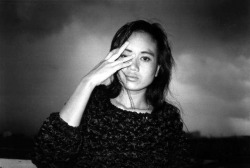
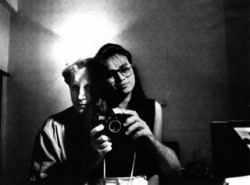
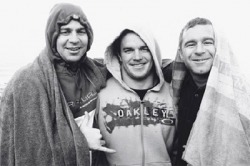

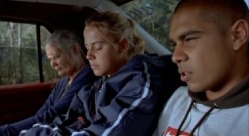
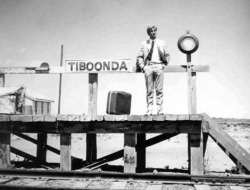
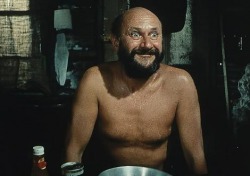


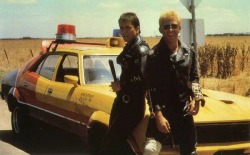
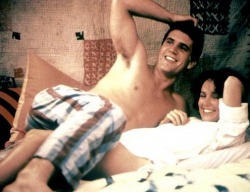
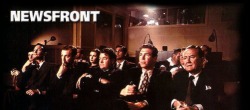
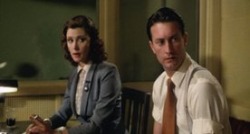


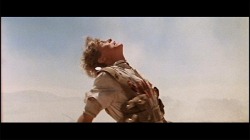
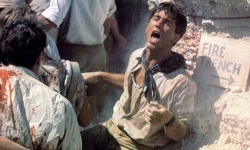
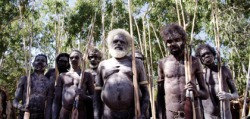
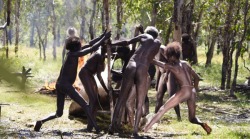
 RSS Feed
RSS Feed